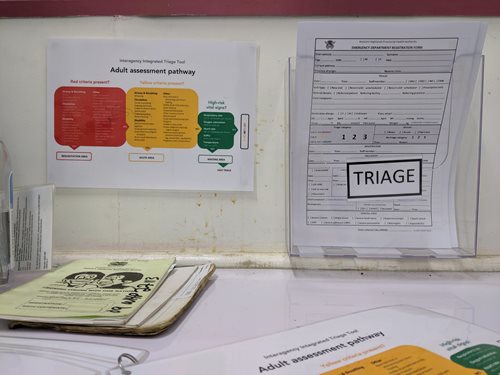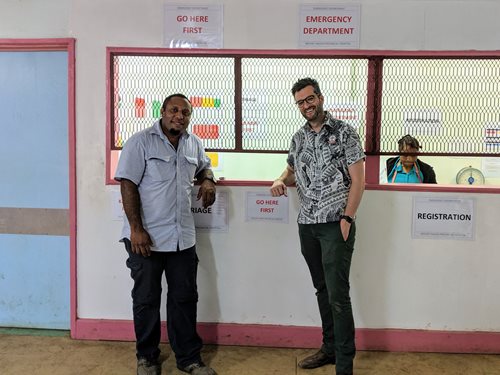 The Interagency Integrated Triage Tool (IITT) is a novel, three-tier triage system designed for resource-limited emergency care settings. It was adapted for Papua New Guinea and piloted at ED’s at Gerehu General Hospital and Mount Hagen Provincial Hospital.
The Interagency Integrated Triage Tool (IITT) is a novel, three-tier triage system designed for resource-limited emergency care settings. It was adapted for Papua New Guinea and piloted at ED’s at Gerehu General Hospital and Mount Hagen Provincial Hospital.
Project lead FACEM Dr Rob Mitchell said, ‘This was the world’s first formal pilot of the system.’
The IITT is applied at the point of ED arrival and allocates patients into one of three, colour-coded categories based on the presence of specific signs and symptoms.

Dr Ovia Bue, Specialist Medical Officer and Director of Emergency Medicine at Gerehu General Hospital ED said, 'Triage allows us to identify patients who need immediate treatment. The ED is now colour-coded, such that the patients requiring resuscitation are taken to the red area. Patients with other care needs may be directed to yellow and green areas.'
Developed by the World Health Organization, International Committee of the Red Cross and Médecins Sans Frontières, the IITT was initially released as one of WHO's recommended tools for the COVID-19 pandemic. It has taken on increased relevance due to the pandemic creating an urgent need for simple tools to identify patients with time-sensitive care needs.
Dr Bue said, ‘Under the new system, emergency doctors will see patients in order of urgency—not time of arrival.'
Feedback to the IITT was overwhelmingly positive, with 100% of respondents stating that they believed it helps to identify and prioritise the most urgent patients.
Dr Mitchell said the new triage tool is likely to have applicability in many emergency care settings across the world.

‘We are already working collaboratively with clinicians in Papua New Guinea to expand the system to other hospitals.'
The implementation of the new system is part of an emergency care strengthening project funded by the Australian Government through the PNG-Australia Partnership with the support of an Australian Government Friendship Grant and the ACEM Foundation.
Dr Mitchell said, “This project was delivered in genuine partnership with our colleagues in Papua New Guinea. By working together we’ve achieved some really positive outcomes, which will hopefully improve emergency care for vulnerable patients throughout PNG.’
Read more at: https://www.thelancet.com/journals/lanwpc/article/PIIS2666-6065(20)30051-1/fulltext